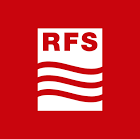Delivering when it comes to indoor coverage
RFS indoor footprint
RFS has a long heritage of designing and implementing indoor solutions in a range of scenarios. Tailoring our premium solutions to suit particular customer needs is why we have a significant global footprint for indoor deployments. This includes a decades-long relationship with CERN to implement mission-critical networks across the site. We also have a presence in over 50% of the world’s Metro systems from London to Paris to Tokyo and are a leading expert in delivering in-tunnel connectivity. Plus, in the enterprise space, we have worked with Taiwan TSMC on various projects including MVPN projects across 5 manufacturing facilities.
In reality
This is just a flavor of some of the examples of how RFS equipment is being used indoors around the world. However, to give you a better idea of how our solutions piece together to solve the challenges of indoor deployments we have pulled together 5 use cases. They give a more detailed look at how we address specific challenges.
Inside a data center
Challenge: To deliver high volumes of data reliably at extremely high speeds to ensure uninterrupted transfer between the data centers and the end user.
Over 38,000 kilometers, or just short of the circumference of the earth. That is how much network cable is used in Microsoft’s Data Centre in Quincy, Washington. Even smaller data centers can require thousands of kilometers of cable. Although storage is a key part of the offering from a data center, fundamentally the transport of that data has a much more immediate impact on the customer. Therefore, ensuring that the network within a data center is running smoothly and capable of delivering consistently is vital. In this scenario, we would use our HYBRIFLEX plug-and-play connectivity solution. This includes high-density Multiport Terminal (MPT) Multi-Fiber Push On (MPO) connectors that minimize the time and effort required to install and terminate large amounts of fiber in buildings. The solution is ideal for buildings, like data centers that have extremely high bandwidth requirements, and a reliable answer to the question of how to manage the challenges of data transportation.
Inside a manufacturing facility
Challenge: Delivering mission-critical connectivity to support security applications including CCTV and IoT security devices.
In this environment, speed alone is not enough to adequately address the needs of the customer, therefore we would use our Mission Critical DRS solution. This offers a single hybrid cable and a single, uninterruptable power supply to deliver traditional Ethernet services as well as mission-critical wireless services. The solution provides the high reliability and power supply security needed to support mission-critical wireless applications, in this instance CCTV cameras and remote IoT devices that form part of the security system.
Inside a university campus
Challenge: With hybrid learning more commonplace than ever in universities across the world, ensuring constant high-speed connectivity across a university campus is essential.
There needs to be a network system in place that meets these requirements and is easy to manage for IT teams with non-specialist knowledge of telecoms infrastructure.
RFS can offer a conventional indoor/outdoor connectivity solution that combines the simplicity of the plug-and-play solution with a much larger footprint that can cover both indoor and outdoor environments. It extends reliable, high-bandwidth connectivity between buildings on campuses of any size and complexity. The solution is ideal for deployments where high-density and mission-critical connectivity are not required and can layer over existing connectivity infrastructure to ensure minimal disruption.
Inside a mine
Challenge: Delivering mission-critical coverage for safety and compliance and connectivity to enable an increasing range of connected operations.
Mines are one of the harshest environments where coverage is required, with irregular spaces and signal blockages caused by heavy, moving equipment making RF propagation challenging. Plus, tight underground spaces offer limited locations to install antennas and repeaters.
The connectivity requirements in mines are two-fold. Firstly, to enable voice communications, video feeds, and remote control of mining equipment in areas where human control of equipment is too dangerous. Secondly, for TETRA networks to ensure the constant connectivity that is needed for safety and regulatory compliance. Here radiating cable, in conjunction with the required repeaters and accessories tailored for each individual deployment can provide the comprehensive coverage needed. For example, RFS supplied over 500km of RADIAFLEX radiating cables in mines throughout Canada in 2018. Using 7/8-inch and 1/2-inch RADIAFLEX cables the deployment was able to support the two key objectives.
Inside an Oil and Gas platform
Challenge: Delivering connectivity in harsh conditions to support real-time and mission-critical applications as well as the commercial services workers living onboard
In this environment complete site-wide coverage is essential. Here RFS is able to deploy a contoured RF solution. It blends active and passive components and uses RFS’s RADIAFLEX radiating cable to deliver comprehensive connectivity. RADIAFLEX meets all offshore flame and fire safety requirements and is classified ‘low smoke’ emitting to comply with international standards.
It is also capable of supporting the multi-service applications needed in an offshore environment supporting frequencies between 617MHz and 6GHz to meet the variety of requirements unique to this site.
Conclusion
In-building connectivity is not a simple one size fits all solution. It needs to be tailored to meet specific case-by-case requirements. At RFS we have the versatility within our portfolio to cater to a wide range of needs for in-building requirements and the experience to deliver quickly with solutions that are built to last.


